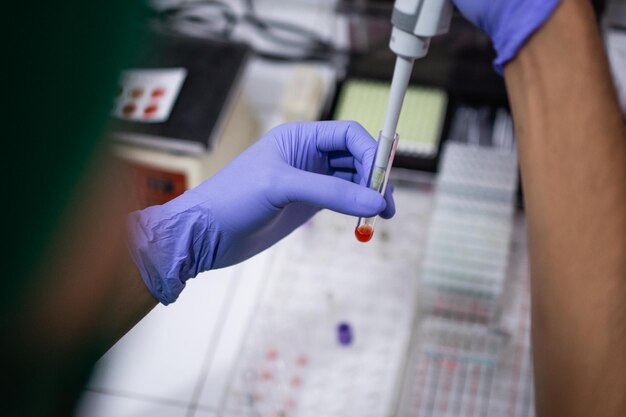Discovering Leukemia: Understanding the Testing Process
When faced with the question of whether symptoms could be attributed to leukemia, it's natural to feel overwhelmed. Leukemia, a type of blood cancer affecting the bone marrow and blood, requires a careful series of screenings and tests for diagnosis. If you or a loved one is about to undergo testing or you're simply curious, understanding the process can demystify what lies ahead.
In this article, we'll guide you through the common tests used to diagnose leukemia, shedding light on the procedures and what they involve without stepping into medical advice territory. We'll explore several stages of testing, and touch on related aspects to bring you a comprehensive perspective.
The First Steps: Initial Consultation and Blood Tests
Why Blood Tests?
The initial step in diagnosing leukemia typically involves blood tests. These are crucial because leukemia affects blood cells, and early indicators can often be spotted here.
Complete Blood Count (CBC)
The Complete Blood Count (CBC) is usually the first test doctors order when leukemia is suspected. It examines the number, types, and characteristics of blood cells, including:
- Red Blood Cells (RBCs): These carry oxygen. Low counts can indicate anemia, a common symptom of leukemia.
- White Blood Cells (WBCs): An abnormal count or type can signal infection or leukemia.
- Platelets: These help in clotting. Low levels may be seen in leukemia patients.
Additionally, a CBC can reveal blast cells — immature blood cells often present in higher-than-normal amounts in leukemia.
Peripheral Blood Smear
This test involves examining a sample of blood under a microscope. It provides more detailed information on blood cell appearance and quantity, further helping in assessing the presence of blast cells. Peripheral smears can also show other abnormalities that flag leukemia.
Next Steps: Bone Marrow Analysis
If the initial blood tests suggest leukemia, doctors will look more closely at the bone marrow, where blood cells are produced.
Bone Marrow Aspiration and Biopsy
These procedures are typically performed together. Here's what they involve:
- Bone Marrow Aspiration: A needle is used to extract a sample of the liquid part of your bone marrow, usually from the hip bone.
- Biopsy: Involves removing a small, solid piece of bone marrow tissue.
The samples are then analyzed to determine the number and type of abnormal cells. This helps in pinpointing the type of leukemia and its progression.
Cell and Chromosome Analysis
Further detailed tests, such as Cytogenetics and Fluorescence In Situ Hybridization (FISH), look for genetic abnormalities in cells, such as Philadelphia chromosome in some leukemia types. These tests provide critical insight into prognosis and treatment paths.
Beyond Blood and Bone: Additional Diagnostics
Once initial testing indicates leukemia, further tests help map out its characteristics and behavior, guiding effective treatment strategies.
Imaging Tests
While leukemia primarily affects blood and bone marrow, imaging tests such as X-rays, CT scans, and MRIs can help identify if organs or lymph nodes are impacted. This gives a clearer picture of the disease's spread.
Lumbar Puncture (Spinal Tap)
In some situations, a lumbar puncture might be necessary to see if leukemia cells have spread to the spinal fluid. This involves using a needle to draw fluid from around the spinal cord.
Understanding Leukemia Types: Classification Matters
Identifying the leukemia type is key to determining the treatment plan. Classification involves assessing:
- Acute vs. Chronic: Acute leukemia progresses rapidly, while chronic leukemia develops gradually.
- Lymphocytic vs. Myeloid: These terms describe the origin of cancerous cells, either in lymphoid or myeloid tissues.
Each type has unique characteristics and requires tailored management strategies.
Subtypes and Molecular Characteristics
Further sub-classifications, defined by molecular characteristics, have emerged with advancements in genetics, helping refine diagnosis and treatment. Tests like Polymerase Chain Reaction (PCR) can detect specific genetic mutations relevant for strategizing therapy.
Preparing for Leukemia Testing: What to Expect
Navigating the diagnostic process can be daunting, but preparing for what to expect can ease anxiety. Here are practical insights:
- Fasting & Medication: You might need to fast or adjust medication prior to certain tests. Consult with your healthcare provider for specific instructions.
- Post-Procedure Care: After biopsies or lumbar punctures, follow care guidelines to avoid complications like bleeding or infections.
- Emotional Support: Bring a friend or family member for support during appointments. Emotional reassurance can be invaluable.
Moving Forward: Diagnosis and Beyond
Understanding the test results culminates in diagnosis, after which your medical team will discuss treatment options. Remember, you are not alone; patient support groups and resources can provide additional help.
Stay Informed: Keeping abreast of new research and emerging treatments can empower you in managing leukemia effectively.
Key Takeaways
To wrap up, here's a handy summary of what to remember about testing for leukemia:
- Blood Tests 🩸: CBC and peripheral blood smear are initial indicators.
- Bone Marrow Tests: Essential for confirming diagnosis and type.
- Genetic Testing 🧬: Offers insight into leukemia's molecular profile.
- Imaging & Lumbar Puncture: Determine extent and spread.
- Preparation is Key: Follow pre-test guidelines and seek emotional support.
- Empowerment 🌟: Staying informed aids in navigating treatment options.
By understanding the testing process for leukemia, you're better equipped to manage your health journey with clarity and resilience.

Related Articles
- Can Leukemia Be Cured
- How Do Cats Get Feline Leukemia
- How Do You Get Leukemia
- How Do You Test For Leukemia
- How High Are Monocytes In Leukemia
- How Is Feline Leukemia Spread
- How Is Feline Leukemia Transmitted
- How Is Leukemia Diagnosed
- How Long Can You Live With Chronic Lymphocytic Leukemia
- How Long Can You Live With Leukemia